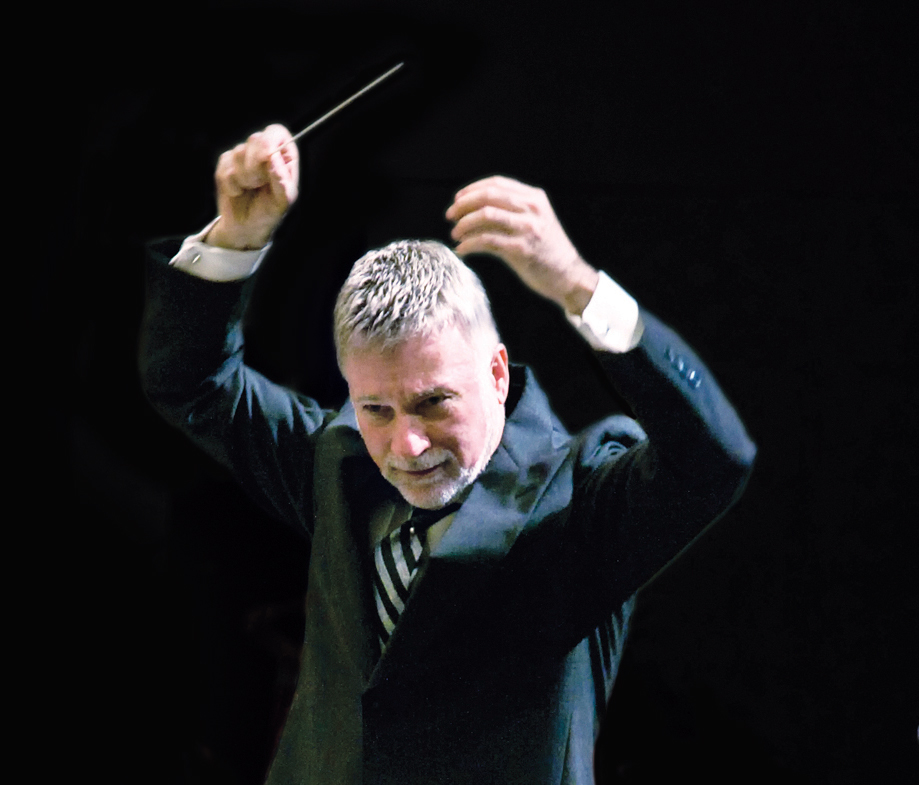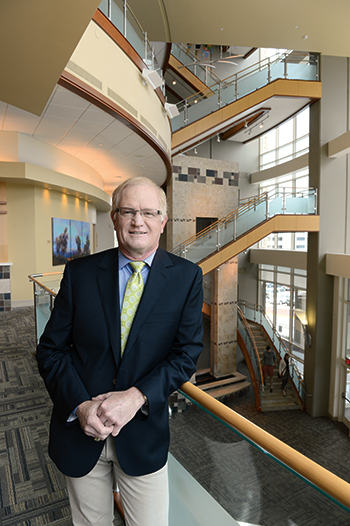[tabs style=”boxed”] [tab title=”Art”]
Mary Kline-Misol, “Pi” (2012), acrylic and charcoal on canvas, 70 x 50 inches.
An exhibit featuring Kline-Misol’s works opens at Moberg Gallery
Oct. 25 and runs through Nov. 30.[/tab][tab title=”Personal Essay”]Santa Found Dead in Alley
Written by Jane Burns
Somewhere, on the third floor of a building in downtown Des Moines, behind a security door and under relatively recent drywall or paint, there is graffiti that may stay hidden forever.
“For a good time, call Jane. 8128.”
The wall may remain, but the reasons for the graffiti are long gone. It was put there by composing room guys, the newspaper equivalent of passenger pigeons—extinct. In a different time and a different place, the 1980s, the composing room staff pasted the articles onto a board as part of the plate-making process. With X-Acto knives in hand, they trimmed the stories at editors’ suggestion, human versions of Control X. What started out as just a phone number (mine) on a wall so they could contact me one floor up in the sports department evolved into a bit of fun that I never minded, even as a 20-something, since some of these guys I looked at like an uncle or grandpa.
These days, it’s not just the composing rooms that are becoming extinct. It’s the newsrooms altogether. Technology has changed what newspapers need—the printing presses can be off site, the staffs have shrunk, reporters can work from home or a coffeehouse, photo staffs don’t need darkrooms. Because of that—and the fact that many of them occupy prime downtown real estate in their cities—the classic newsrooms are going away.
I worked at The Des Moines Register for 18 years. Its building is for sale, and the company moved to Capital Square in June. But it’s not the only one that has cleared shelves and packed boxes. The paper I worked for after that, the Minneapolis Star Tribune, has a building that sits in the midst of downtown development around a new Minnesota Vikings football stadium, and a move looms. The Washington Post building, where Woodward and Bernstein wrote stories that took down a president, is for sale.
There’s much romanticizing of these places, and it’s not unfounded. My description of the Register’s old Locust Street building always has been that it looks like the kind of place where Clark Kent and Lois Lane would work. There are beautiful marble staircases, with steps worn down from a century of journalists running up and down them. There was a giant globe in the lobby, and plaques of Pulitzer Prize winners greeted visitors. Historic pages, with great headlines like “Earthquake Leaves San Francisco A Charnel House,” lined the hallway to get to the newsroom. Until 2000, the presses were in the building’s basement, with tall open windows from the street that allowed passers-by to watch the paper being printed.
It’s easy for those of us who don’t work there anymore to express shock and horror at the thought of the newsroom moving and changing. The newsroom in our minds was a city block long, with cigarette burns in the linoleum and the lingering echoes of barking editors. The reality is of a worn-down place that would never get the overhaul it needed.
Sometimes buildings wear out. Sometimes they aren’t so useful anymore. It’s sad, and I am all for preservation, but some things weren’t built to last, or at the very least, they need a lot of tending.
The newsroom of my mind is a wonderful place, with a tough, crotchety editor who dreamed of one day getting to write a headline that said “Santa Found Dead in Alley.” Sadly for him, but happily for Santa, that never happened in Des Moines. It’s a place where the huge west-facing windows offered a free and clear view of the sunset every night, and for the gorgeous ones, we’d stop what we were doing and watch. It’s a place where those same composing room guys would fill a pneumatic tube with popcorn and mark it “For Jane” and shoot it upstairs to me on a Saturday night.
But the newsroom of the real world came to be a place where blinds blocked those windows so people could see their computer screens. In some ways, it’s no loss; the flurry of downtown development in the past 15 years has taken away that western sunset view.
The building and its newsroom were retrofitted so many times for the continuous change of the industry that it became recognizable but not familiar. It’s a place where the bathrooms were falling apart and the first newsroom staffers who showed up to work posted the temperature on Facebook so their co-workers knew how to dress that day. They’d either freeze or they’d sweat, and indeed, on an afternoon visit there over Drake Relays weekend, I went from being comfortable to wishing I had worn layers.
For the people who are there and have to endure the romantic, not-based-in-reality notions of the staffers of the past, I understand how they might be tired of hearing that. I understand it every time I drive down the main street of my
town, past the empty lot where my family’s home used to be.
The house has been gone for seven years now, but I still hear sadness from people on a regular basis. “Oh, it just breaks my heart every time I drive by where your house used to be,” they say.
For me, not so much. Our house, while a place filled with memories, had reached its time. Like the newsroom I love, it had been built onto and retrofitted so many times it could not take so much as another nail. An old building that had once been a Sinclair gas station circa 1932, then a pet hospital and then a photo studio with a house for eight people on top had nothing more it could give the world. With its flat, leaky roof and many other issues, I think my mom would happily have swung a ceremonial sledgehammer before the bulldozers began their work if one were offered. I know I would have.
“It must be so sad not to see your house every time you drive by” is something I hear a lot, too.
And nothing could be further from the truth. I see my house in my mind all the time. I see my sisters and me in Dad’s photo studio playing with his old Mathew Brady-like camera. I see my aunts and uncles and cousins shoved into all the rooms at card tables having Sunday dinner. I see my brothers learning to walk. I see my mom at the supper table, putting down her utensils after finishing a meal and saying, “Damn, I’m a good cook.”
The newspaper buildings will be gone, too, but not really. If anyone can tell stories, it’s newspaper people. And they’ll tell the stories of these places so well that if you close your eyes, you’ll be able to see anything you ever wanted to see.
Except, perhaps, Santa Claus dead in an alley in Des Moines. And that’s probably a good thing.
Jane Burns was a reporter and editor in the sports and features departments of The Des Moines Register from 1983 to 2000. She is now an assistant city editor at the Wisconsin State Journal in Madison and lives in Mount Horeb, Wis. She is a 1983 Drake graduate.
[/tab] [/tabs]









